Marantz 2230 Stereo Receiver
Jed Margolin
When my Marantz 2230 developed problems with the phono inputs I went to my Owner's Manual and was pleased to discover that it had come with schematics. It used to be common for consumer electronics products to come with the schematics. When is the last time you bought a piece of electronics that came with them?
Because the schematics for the 2230 don't seem to have been posted on the Internet, I am posting them here so that others may keep their 2230s working. I have scanned them in high resolution because I feel they deserve it.
The entire schematics were crammed onto one 11" x 17" sheet which I have scanned onto two 8.5" x 11" sheets. The sheets overlap so you can cut and tape them together. You can download it here (1.4 MBytes PDF).
In order to make the schematics more usable I have also scanned them in ten sections in magnified form. Most are at 2:1. Others are somewhat less in order to make the sections each fit on one sheet.
The sheets are in PDF format and range from 300 KBytes to 700 KBytes each.
In order to avoid a huge file to download all at once I am making them downloadable separately using the following graphic. Just click on the section you want to download. The board numbers come from the schematics; the labels are mine and are based on a fast look at the circuitry.
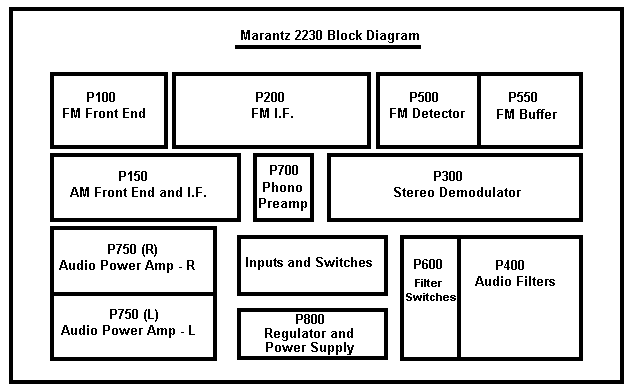
Update: A jpeg version is available here. The file sizes are larger but produce a higher quality image.
Update: Since I first posted this article I
have been pleasantly surprised by the number of people with 2230s, so I have
scanned the Owner's Manual. You can download it here (3.0 MBytes PDF).
History of my Marantz 2230
I bought my Marantz
2230 in June 1974 from Lafayette Radio on
Although it was a high quality receiver, it wasn't the most expensive one available, but back then there were fewer electronic devices competing for your money. More about that here.
A word about how the receiver is designed and constructed. Looking at the schematic you will see mostly bipolar transistors, a few JFETs, and one IC. As a consequence, even after 45 years it is still very repairable.
The design used a number of separate PC boards. An advantage of this approach is that it makes it easier to keep signals on one circuit from leaking into another circuit. This can be a real problem when using one large circuit board containing sensitive analog circuits. The disadvantage is that all the circuit boards have to be wired together. In this receiver it was done with discrete wires; thus the assembly was very labor intensive. The dial assembly also contains a number of small parts which all had to be manually assembled together. On the other hand it was, and still is, an excellent performer and compares favorably to modern receivers. If you buy a digital receiver today will it still be working in thirty years? Maybe. If something breaks will it be repairable? I doubt it. (If it breaks the day after the warranty expires it will be more expensive to have it fixed than it will be to buy a new one.)
It is a shame that when the FCC has the broadcasters (both AM and FM) turn off their analog signals a few years from now and transmit digital only, this fine Marantz receiver as well as every fine (and not so fine) receiver built in the last eighty years will have nothing to listen to. [When I wrote this in 2004 that was the plan. It didn’t happen. But it still might happen in a futile attempt to bring listeners back to AM and FM radio. The real reason listeners have left AM and FM radio is because there is very little worth listening to.]
Now, for some pictures.
Marantz 2230 Front
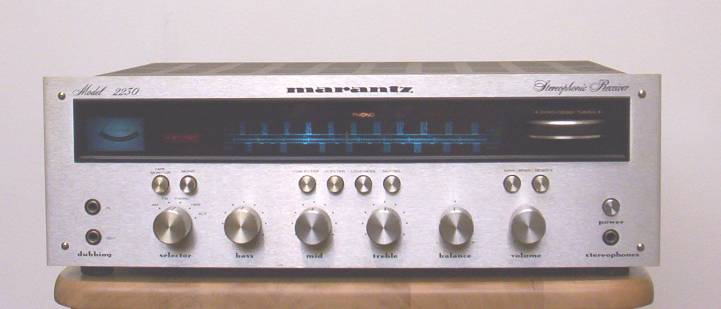
Marantz
2230 Back
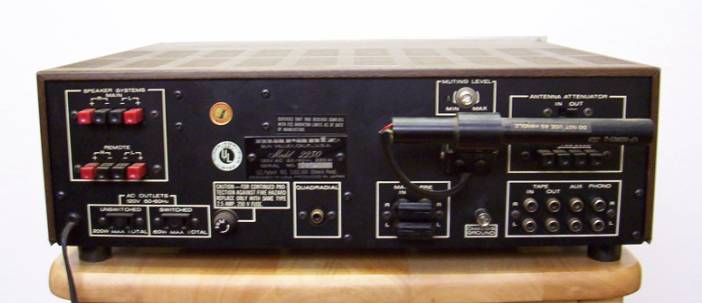
Marantz 2230 with Cover Removed

Notice the tuning wheel in the lower right. It gives a very nice feel to tuning in stations.
The shielded box immediately in front of the
power transformer contains the main tuning capacitor (used for both AM and FM)
as well as the FM RF input board P100. The shielded box to the left of it
contains FM Detector P500.
Marantz 2230 with Cover Removed - Side View

Marantz 2230 Voltage Regulator - P800

Marantz
2230 Power Amplifier - P750(L)

The
amplifier is the vertical board.
Marantz
2230 AM RF Board (next to the front panel) - P150
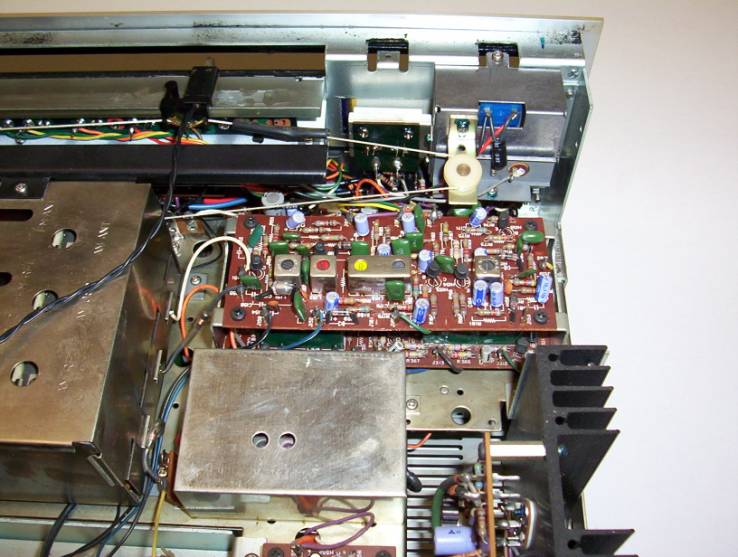
Notice the board underneath it. It's the Stereo Demodulator P300 . Here's another view of it.
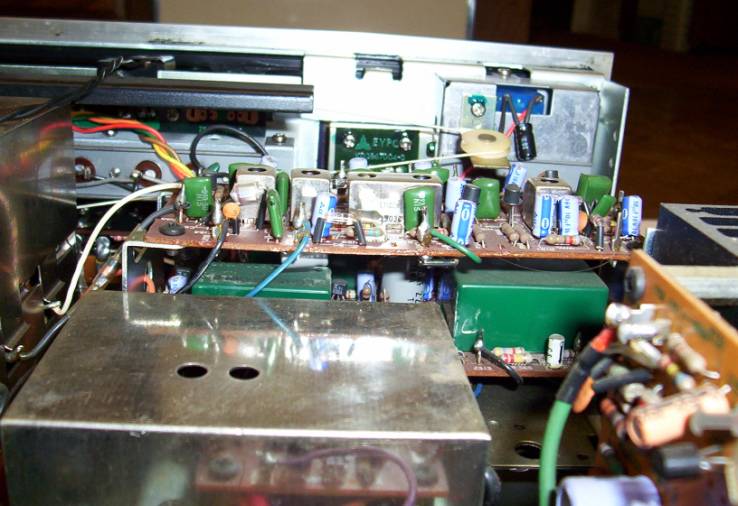
The
square metal box in the foreground contains the FM Detector - P500

The P500 board contains the receiver's only
integrated circuit, H501, a TA7060P Wide and Narrow Band Amp, FM/IF
Limiter. The TA7060P is still available from NTE Electronics
(www.nteinc.com) as NTE1104. The datasheet is here .
Marantz 2230 FM Buffer Amp (below the power amp) - P550
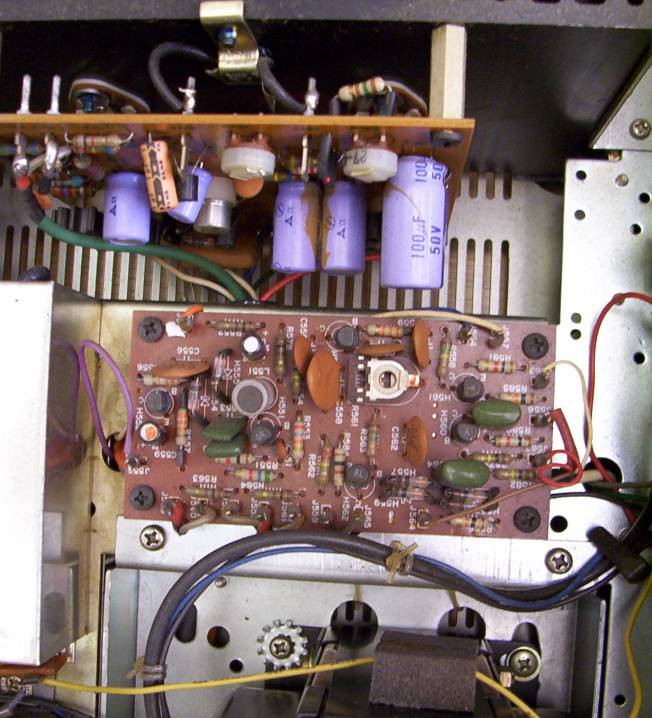
But
wait, there's more.
Marantz 2230 Bottom
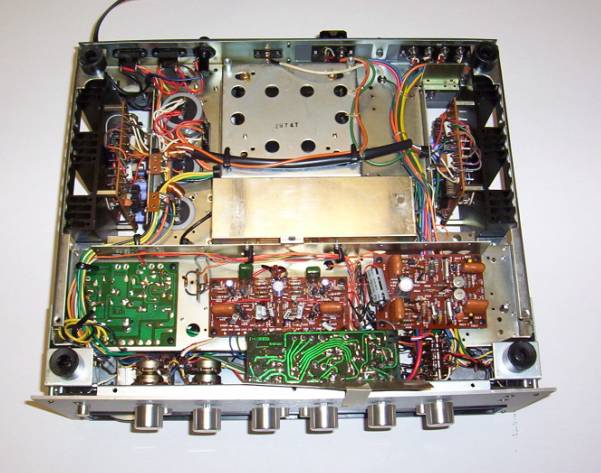
Some of the boards are already visible from the top of the chassis. Some are not. The rectangular box in the center of the chassis between the two amplifier boards contains FM IF Board P200.

Marantz 2230 Phono Preamp - P700
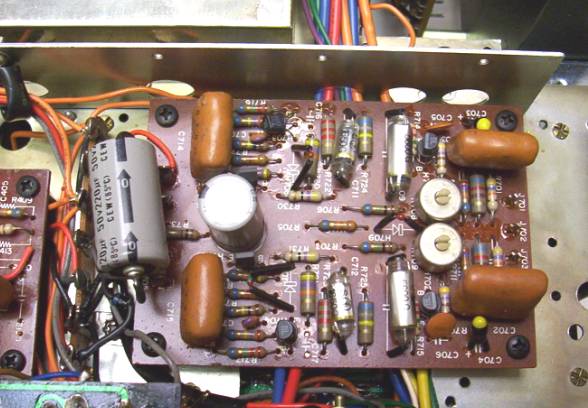
.
Marantz 2230 Filter Board - P400
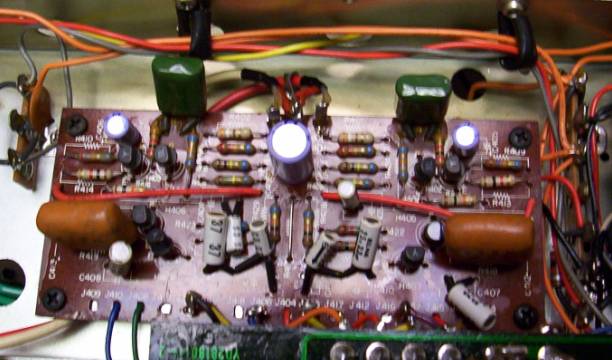
Marantz 2230 Filter Control Board - P600
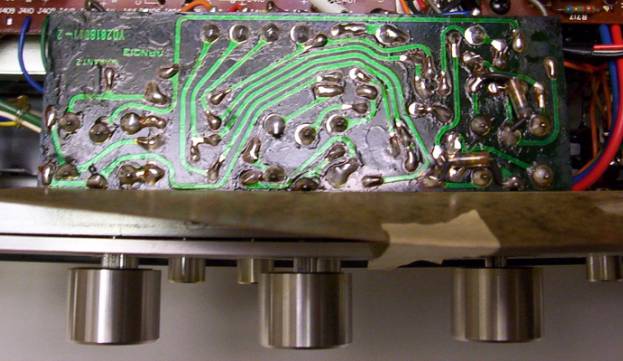
The Bass, Mid, and Treble Controls are mounted on it along with a few filter components.
And yes, I did fix the phono preamp. Transistor H701 was bad. I replaced it with a 2N3904 and my Marantz 2230 now sounds great again.
Jed Margolin
April 20, 2004
Update:
8/7/2004 Owner's Manual added
9/9/2005
Schematics in jpeg added
5/5/2019
Consumer Price Index Calculations
According to the U.S. Department Of Labor Bureau of Labor Statistics the Consumer Price Index (All Urban Consumers - (CPI-U), U.S. city average, All items, 1982-84=100) for June 1974 was 49.9 and for March 2004 was 187.4 for a ratio of 3.83.
Therefore, an item costing $415.95 in June 1974 would be worth $1590.80 in March 2004 dollars.
They had this chart at an FTP site which
they discontinued in 2014. Now it is at https://download.bls.gov/pub/time.series/ap/ap.data.0.Current
. Since they might have changed it again by the time you read this I am posting
the latest one (2018). Click here.
An item costing $415.95 in June 1974 would
be worth $2,140.23 in 2018 dollars (second half of 2018).
There are more specific charts for various
goods and services at the Consumer Price Index Home Page at: http://stats.bls.gov/cpi/ (As of May
2019 this link still worked.)
[Updated 5/5/2019]
Consumer Electronics in the 1970s
Basically there were Radios, Phonographs, TVs (Black-and-White as well as Color), and Stereos (which were really good Radios and Phonographs).
There were no cell phones although a few rich people had car phones. Each city had about six frequencies available for the entire city so only six simultaneous calls could be handled. You had to make all your calls through the mobile operator and the system was half-duplex so people had to take turns talking. It was basically a radio transceiver and a phone patch, which hams had been doing for years.
Cell phone systems, which permit a large number of people to use the same channel at the same time are possible because the cells are small and the system uses FM. In FM there is something called the capture effect by which an FM detector receiving two signals on the same frequency will be totally captured by the stronger signal, as opposed to AM where the two signals will simply be added together like in Citizens Band, which was very popular and for a time was a hobby all by itself.
Most people had telephones which were rented from AT&T, and the choices were limited. You were allowed to connect your own equipment to the AT&T telephone line but only through something called a Data Access Arrangement device, which supposedly was there to protect AT&T line from your equipment. Its real purpose was for the high monthly rental fee to discourage people from using telephone equipment and services other than that which AT&T rented. (This explains the later popularity of acoustic modems.)
In the middle 1970s video games were just getting started. You could buy a few simple dedicated games from Sears. The games in the arcades were more sophisticated but still very crude compared to what came later.
There were no personal computers.
Then, as now, there were a number of specialized hobbies that people engaged in, but for the mass consumer market, if you had money to spend you bought a good stereo and lots of records.